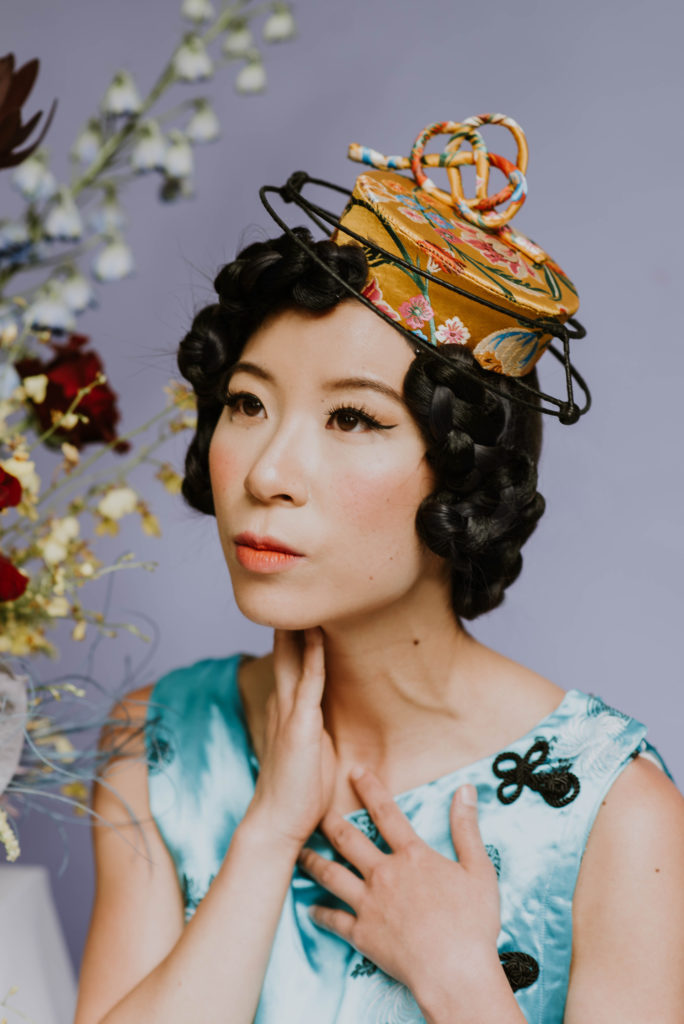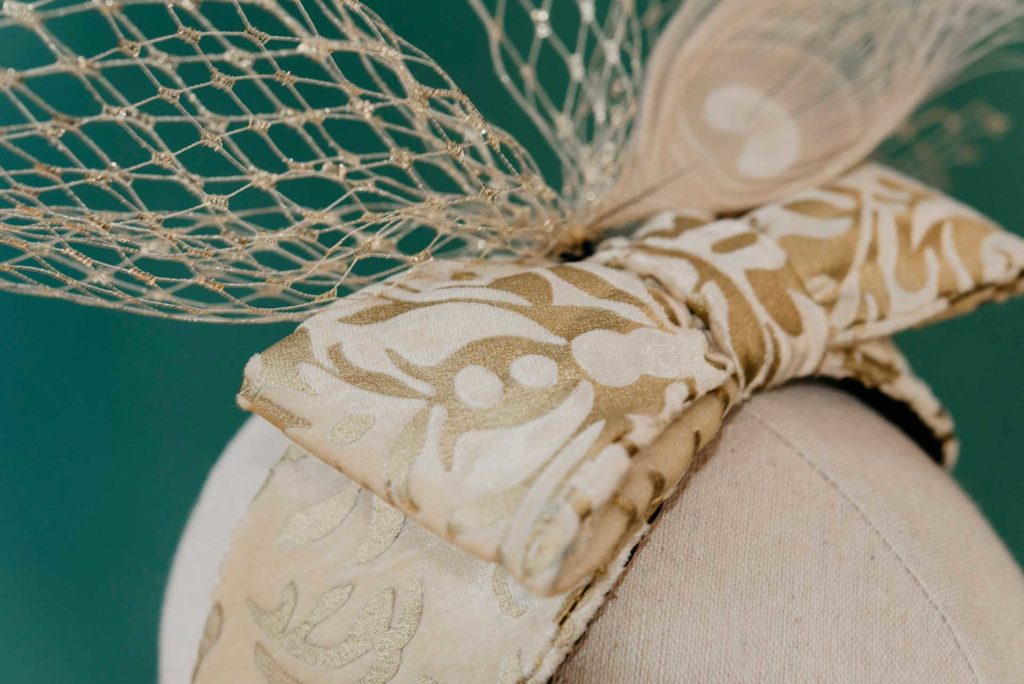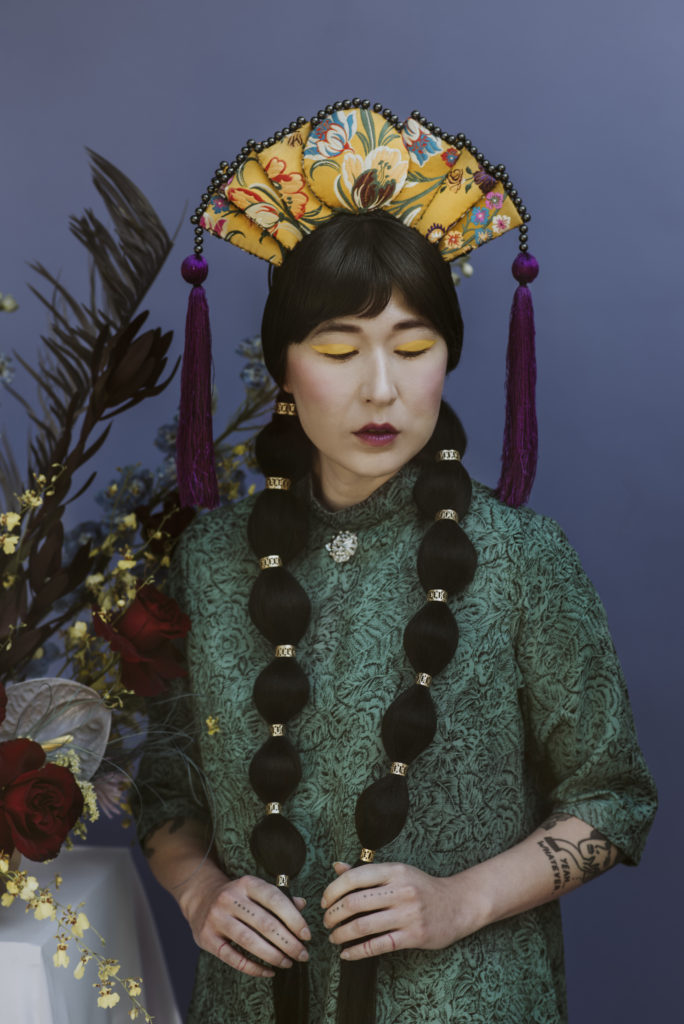Budding Calgary-based milliner Carrie Yap is exploring her Chinese heritage with gusto. Manifesting her interest in traditional artisanal craft with a collection of headwear that is interwoven with auspicious symbolism, Yap is reviving venerable techniques for a modern clientele with YAP SISTER. Through millinery, Yap has found an outlet to reconnect with her ancestry and uncover a wealth of knowledge about Chinese culture.
With the Lunar New Year commencing today, Yap is revisiting what piqued her interest in reclaiming her heritage and reconciling her status as a hyphenate Canadian, while also detailing the traditions that she plans to continue during this year’s (socially-distanced) celebrations.
What does the Lunar New Year mean to you?
“Lunar New Year is a time for celebration! After the Mid-Autumn Moon Festival, it’s my second favourite holiday as I get to spend time with my family and friends, while incorporating a few new traditions each year. What I love about the New Year is how symbolic it is. It’s not just a new day to a new year, but rather, there is a build-up of activities that you do to make sure that the upcoming year is as prosperous as possible. This time around, the Lunar New Year will be extra special as my husband is an ox and we are welcoming a son who will also be born in the year of the ox.”

How will you be celebrating this year’s festivities? Do you have any traditions that you practice?
“Normally, Lunar New Year is a big festivity, and I look forward to hosting friends and family to large dinners and parties. However, with the pandemic, my activities will be limited to our household. Living in Canada, we don’t get to celebrate the multi-day events to the same extent as in Asia, but I will be adopting as much of the customs as possible. We have already started the holiday celebrations including cleaning our house top to bottom, buying new clothes (in my case, I got myself Lunar New Year earrings from TALEE Studio) and decorating my house with Chinese New Year couplets. One tradition that my family always practices is a reunion dinner, as well as giving and receiving red envelopes (ang pao). Food, like in most communities, plays a focal part of the festivities, and this year I will be making my dumplings by hand and distributing to friends, as well as eating other symbolic foods like fish, rice cakes, and longevity noodles. I will also be starting two new traditions this year: making my own glutinous rice balls (sweet rice balls and savoury Hakka rice dumplings) and tossing Yee sang (a tradition common to South East Asia).”

What aspects of Chinese culture do you want your artisanal hats to emphasize?
“Traditional Chinese culture can be superstitious (as seen by the symbolism in the Lunar New Year), and so hidden symbolism and meanings are often woven into hats to increase the wearer’s prosperity, longevity, and fortune. I think this narrative and traditional way of expressing oneself is charming. For the Auspicious Expressions Collection, this was a form of communication that I wanted to carry on.
“For me as the maker, the ability to weave and gift the wearer with auspicious symbolism makes the piece so much more valuable.”
When did you reconcile with your Chinese heritage? What was the tipping point that led you to fully embracing your culture?
“While I would say I have embraced my culture, I am still on my journey to reconcile with my Chinese heritage, as there is still so much to learn and experience. With every hat, I learn more about Chinese culture and history, and with every detail, I am engaging myself in traditional ways of expression. This is why YAP SISTER is about storytelling, it is capturing my journey through these media.
“There was not a single particular event that was a tipping point, but a build-up of events over a few years. It includes being in a workforce and realizing I could not relate to some of my western peers, realizing I had a very limited knowledge of my culture to pass on to my future kin, to finally realizing I was a hyphen Canadian and what that meant in terms of inclusion and equity in society. This culminated with embracing my lived experience as a hyphen Canadian, which I believe to be one of my strongest assets.”

Are there other forms of traditional Chinese fashions that you are curious to explore and add to your acumen?
“The next project I am currently working on is Chinese Opera costumes, in particular, the head pieces, which are known as Kuitou. My project partner and I are currently researching and learning as much about the process as possible, including the materials used, the known stories and folktales performed, the symbolism in the colours, and the different characters involved. Like many traditional arts, there are very few people who teach the techniques and even less who are interested in learning. Our project is focused on reviving the craft.
“We are currently in the early phase of this project, learning techniques, testing out prototypes, and speaking to those that practice Chinese Opera.”

